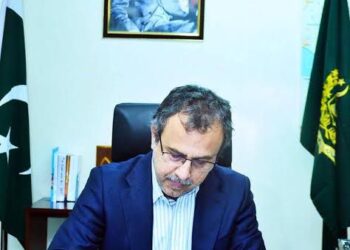ISLAMABAD : The levelized tariff of long-debated 1200 MW ( net capacity 1,117 MW) Chashma-5 (C-5) will be Rs 17 per unit for 40 years with construction cost is Rs 1.125 trillion to be completed in 81 months( 6.75 years).
According to tariff petition submitted to NEPRA, total tariff of C-5 will be Rs 19.8268 per unit for first 1-12 years whereas it will be reduced to R 9.6320 per unit for 13-14 years. The overall capital cost is estimated to be $ 3.081/ kW . The proposed capital structure of the project is 81 per cent debt and 19 per cent equity. Debt repayment period is 12 years and grace period is 8 years. Interest rate on foreign financing is 3 per cent. The petitioner has assumed 90 per cent plant factors.
Reference exchange rate of Rs 280/USD, Rs 38.50/RMB and RMB 7.27/USD. ROE of 14.50 per cent has been assumed per annum. Redemption of equity has been coassumed in 28 years from 13-40 years.
The sources said, the capacity trapped country will included the project in the committed projects as it is not fit in the under discussion IGCEP due to its higher cost. The Power Division has recently rejected the offer of WAPDA for 300MW Floating Solar Project at a tariff of Rs 2.98 Cents per unit being expensive.
NEPRA has sought comments from the stakeholders as the PAEC has sought immediate application of the proposed tariff on interim basis under section 4(7) of Tariff Rules 1998.
The Regulator has framed questions for the PAEC, which have not been made public . However, these the framed questions are as follows (i) does the C-5 project fulfill the requirements for being strategic project as stipulated in the relevant provisions of National Electricity Policy 2021 and National Electricity Plan 2023-27? ;(ii) if the C-5 project has been declared strategic project, has there been any Least Cost Violation (LCV) evaluated? If so, what is the status of necessary approval of the Federal Government in regards of LCV and mechanism of the same? ;(iii) has PAEC approached the NTDC and provided the relevant information for inclusion in the next iteration of Indicative Generation Capacity Expansion Plan (IGCEP)? ;(iv) whether the NTDC has been consulted for assessment and evaluation of the proposed site/location and power evacuation, concerning the current integrated system planning and system operations constraints and requirements to assure future smooth operations of the project? (v) has PAEC assessed the interconnection and associated costs of the project and communicated the same to NTDC for inclusion in the Transmission System Expansion Plan (TSEP)? ;(vi) PAEC has not submitted the Grid Interconnection Study for the project. In the absence of same, how it can be ensured that it will comply with the connectivity standards in accordance with relevant provisions of the Grid Code? ;(vii) according to submitted PC-1 of the project, Indus River System Authority (IRSA) and Environment Protection Department, Govt. of Punjab have granted No Objection Certificates [NOC(s)] however, the copies of the same have not been provided ;(viii) PC-1 mentions that the project was envisaged under the Medium Term Development Framework (MTDF) 2005-10. What is the legal status of MTDF and has the same ever been shared with NTDC and other relevant entities for planning purpose or otherwise? ;(ix) according to the PC-1, what is the financial impact assessment of the project on power system? ;(x) PC-I mentions that the Estimated levelized electricity generation cost from C-5 project (Rs.13.46/kWh) is lower than the current tariff of operating imported coal-fired (Rs.42.54/kWh) and Thar coal-fired (Rs.25.82/kWh) power plants based on energy charges available in the merit order of June 01, 2023 and capacity charges for the Apr-Jun 2023 quarter. What is the rationale of comparison? ;(xi) what will be the impact of C-5 project on future projected quantum of Renewable Energy (RE) to be inducted in the system as candidate projects and how it will impact the targets of RE Policy 2019? ; and (xii) Zhangzhou 1&2 will be the reference plant for C-5 project which is still under construction. In such circumstances, Will it be prudent to install a nuclear power plant based on a design which has not been put into operation?
Ends
















